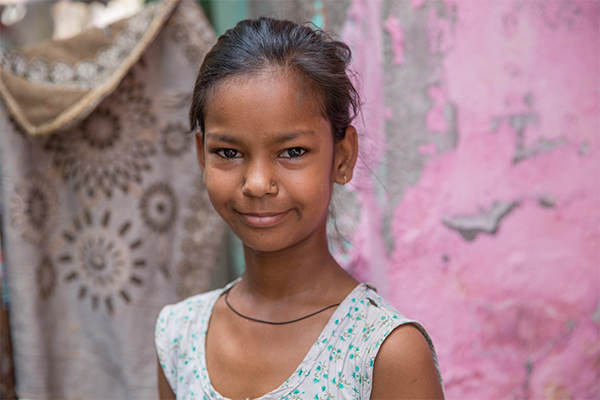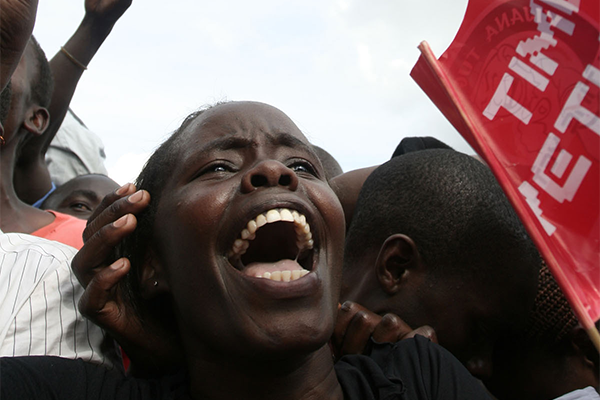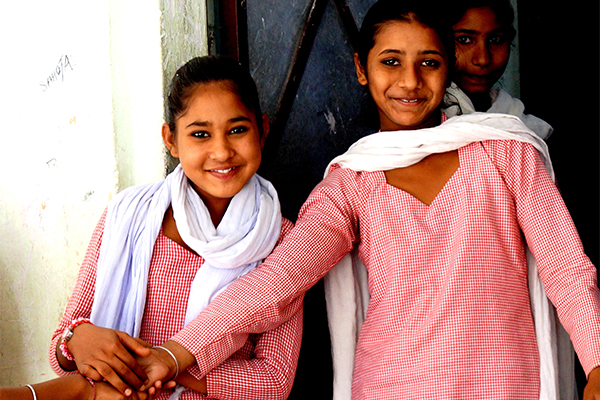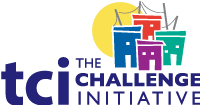AYSRH Toolkit
Demand Generation for Youth- Home
- Help and Support
- Close
- Toolkits
- Global Toolkit
- AYSRH Toolkit
- Hub Toolkits
- Core High-Impact Practices
- Gender Essentials Mini Course
- Close
- Resource Collection
- Community of Practice
- Coaching
- Log In/Register
- My Profile
- English
Comprehensive Sexuality Education
What is it?
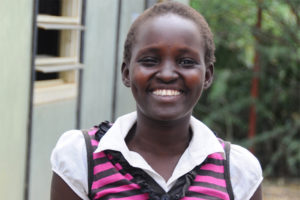
© 2015 George N. Obanyi/FHI 360, Courtesy of Photoshare
Youth need and have the right to comprehensive information about their sexual and reproductive health. There is growing international consensus and evidence that this information should be age- and developmentally-appropriate and scientifically accurate. Comprehensive Sexuality Education (CSE) should be curriculum-based and incremental, starting at an early age and providing new information that builds upon prior learning. CSE is comprehensive in that it provides an understanding of sexual and reproductive health and rights (SRHR) in the broader context of young people’s lives to equip them with the knowledge and life skills they need to make informed decisions, to enjoy their sexuality, to mitigate vulnerabilities (including those specific to the urban environment), and to protect their health, well-being and rights.
What Are the Benefits?
- Enables positive health-seeking behaviors by increasing knowledge about different aspects of sexuality, behaviors and risks.
- Reduces risky sexual behaviors, increases knowledge and use of contraception and can protect adolescents and young people from HIV by improving attitudes related to SRH.
- Can reduce adolescent and youth vulnerabilities to violence by promoting bodily integrity, self-confidence and negotiation skills, and gender-equitable norms.
How to Implement?
CSE has been shown to improve adolescent SRH knowledge, attitudes and behaviors when implemented well. Before commencing the development of a CSE program, stakeholders—including youth—should agree on the program’s aims.
Step 1: Establish a multisectoral group of champions
The support of stakeholders and partners from local to international levels can go a long way in creating an enabling environment for CSE programs. Establish a working group that includes a cross-section of stakeholders such as community leaders, youth workers, health providers, representatives of Ministries of Health and Education, academics, young people, parents, teachers and faith leaders. Such a group can act as community champions if the program meets resistance. Additional tasks for such a group include:
- Conducting a needs assessment of adolescents and/or youth SRH (met and unmet needs)
- Identifying community gatekeepers (those who have influence over youth access to healthcare)
- Advising on potential risks and challenges, including opposition the program is likely to face, and how to prioritize and mitigate those risks and challenges
- Developing a collaborative definition of CSE and its objectives, ensuring a common understanding amongst all stakeholders
- Ensuring that program policies are gender transformative and inclusive—not only across identities but also addressing how to facilitate access to CSE among marginalized and vulnerable populations
- Clearly articulating key program messages for the local context, with joint ownership
- Ensuring mechanisms for developing and strengthening community participation emphasize strengthening intergenerational dialogue
- Establishing links to adolescent and youth-friendly health and referral service systems, in anticipation of the demand likely to be raised by CSE workshops or programs
Step 2: Develop a curriculum grounded in young people’s realities
There are a multitude of tools and resources available for creating CSE curricula; see the External Resources for some examples. UNESCO’s technical guidance offers 18 characteristics of impactful programming, emphasizing:
- The provision of factual information
- Addressing risky behaviors
- Strengthening protective factors
Curriculum development must be based on the realities and needs of young people in their own environment, and experts as well as community stakeholders should be involved. It should be culturally sensitive, age-specific, sex-positive, and based on gender equity (UNESCO 2018). Consider the ways in which youth learn best, and plan activities that will help them build skills for health and well being, such as how to nurture healthy interpersonal relationships using effective communication and the ability to make (and assert) informed decisions (UNESCO 2018; IFMSA 2019). Participatory teaching methodologies are considered essential to ensuring the development of skills and self-efficacy.
|
An analysis of the SRH challenges faced by adolescents and young people living in two slums in Nairobi showed low levels of knowledge on key SRH indicators, including menstrual hygiene; HIV and perceptions regarding testing, treatment and care; social norms regarding gender and sexuality; and early onset of sexual activity in early adolescence with low rates of condom use and high rates of unintended pregnancy. The analysis concluded that programs should reject a “one size fits all” approach in order to develop solutions for addressing adolescent SRH needs. It recommended a combination of CSE for younger adolescents alongside strengthened contraceptive services and poverty reduction strategies. |
Step 3: Train and support educators to deliver rights-based CSE
Many different educators can be involved in delivering CSE programs, including school teachers, coaches, peer educators and health providers. To be well-informed, educators should receive capacity-building training at the program’s outset, and regular support and monitoring throughout the program. They should also be skilled in developing and leading collaborative, participatory approaches, and be able to elicit high trust from young people. Above all, they need to be accessible and non-judgmental, and approach the CSE information from a practical standpoint, avoiding personal or moral bias.
Step 4: Create enabling environments for program delivery
CSE can be delivered in a variety of different contexts, including schools, vocational centers and youth clubs. Try to ensure that the values and principles being taught through CSE are also espoused by the organization or venue within which it is delivered. Ministries of Education and Health are key stakeholders, as are NGOs and Civil Society Organizations. Given that in most countries, adolescents and youth spend a significant proportion of their days in school, schools represent a cost-effective and sustainable avenue through which to reach adolescents and youth with age- and developmentally-appropriate, incremental information about sexual and reproductive health and life skills. Existing infrastructure and human resources can be used to deliver CSE (UNAIDS 2018, IFMSA 2019). The whole-school approach requires the involvement of all staff members in schools where CSE is taught, establishing a safe environment for the delivery of the curriculum; this approach has been shown to be highly effective at ensuring the sustainability of CSE and reaching more students. In Ziguinchor, Senegal, TCI’s Francophone West Africa Hub is using a step-down training approach to scale up CSE in schools.
|
Projet Jeune Leader implements a whole-school approach to sexuality education in public middle schools in the Haute Matsiatra region of Madagascar. This includes time-tabled sexual health and leadership classes, after-school programming, counseling services, medical referrals and safe recreational spaces for young adolescents. This “intracurricular” program fulfills the tenets of CSE, yet offers a stark departure from traditional initiatives, as teachers are no longer the critical service providers. Instead, young adults between the ages of 18 and 25 are recruited for their dynamism and potential as role models to work full-time as educators, counselors and mentors to students in their assigned school throughout the school year. With endorsement from the Ministry of Education, these highly trained, supported and monitored educators strengthen existing school systems, providing not only CSE, but also a package of services (medical referrals, counseling, extracurricular activities, programs for parents) as part of an interrelated whole-school approach. Program evaluations have shown that this approach improves knowledge, as well as leads to more positive and gender-equitable attitudes of SRH among young adolescents in Madagascar. |
Step 5: Integrate with SRH service delivery
There is evidence that the provision of appropriate sexual and reproductive health services impacts adolescents’ knowledge, attitudes, practices and behaviors (Chandra-Mouli et al, 2015). Youth require not only knowledge and information on SRH, but also practical information about how and where to access youth-friendly services. Some CSE programs link with service-providing institutions through peer educators, who refer classmates to certain clinics. CSE can be complemented with community-based distribution of condoms and other family planning methods (UNAIDS 2018). Other programs may ask health clinic representatives to visit the school and raise awareness of youth-friendly services. School-based programs may offer weekly or monthly clinics on site to facilitate access for young people (who often find it difficult to access services during their normal operating hours). CSE is about more than just information: It’s about helping young people turn their personal wishes and decisions into realities for their lives. Connecting with services is an essential way to transform information into meaningful action.
Step 6: Assessment and evaluation
Given the time and resource constraints facing many CSE programs, more often than not success is indicated by the number of students attending sessions. But try to get beyond the numbers, with innovative measurements—assessing assess a program’s ability to transform harmful gender norms, empower youth, raise their awareness of their human rights, link with SRH and other health services, and equalize power dynamics in sexual relationships. Pay attention to the gender balance among those reached by CSE, as engaging boys is paramount. As always, the point of reference for determining success should be youth perspectives, needs and realities.
What Is the Evidence?
- Abstinence-based approaches do not work. Several reviews of global evidence have been conducted. Their broad consensus is summed up in a study for the National Campaign to Prevent Teen and Unplanned Pregnancy: there is no strong evidence that abstinence-based programs delay the initiation of sex, hasten the return to abstinence, or reduce the number of sexual partners.
- CSE advances knowledge and use of contraception, particularly condoms.
- UNAIDS recommends CSE as one of the five pillars of HIV prevention, along with economic empowerment and access to SRH services for young women and adolescent girls and their male partners (particularly in high-prevalence locations).
- An analysis of evaluated CSE programs by Haberland (cited in Chandra-Mouli) reveals that programs that incorporated an empowerment approach emphasizing gender and rights were particularly effective in improving reproductive health outcomes.
- Interventions to increase demand for SRH services are most effective when education and communication efforts are directly linked to the supply of services; where there is community and social support for the provision of services; and where there are multisectoral approaches (e.g., operating in both the health and education sectors).
TCI APP USERS PLEASE NOTE
You will only receive CERTIFICATES by email – when earning a score above 80% – and will not be able to view or print a certificate PDF from the TCI app.
Test Your Knowledge
Earn a Certificate
Quiz Summary
0 of 5 Questions completed
Questions:
Information
You have already completed the quiz before. Hence you can not start it again.
Quiz is loading…
You must sign in or sign up to start the quiz.
You must first complete the following:
Results
Results
0 of 5 Questions answered correctly
Your time:
Time has elapsed
You have reached 0 of 0 point(s), (0)
Earned Point(s): 0 of 0, (0)
0 Essay(s) Pending (Possible Point(s): 0)
Categories
- Not categorized 0%
- 1
- 2
- 3
- 4
- 5
- Current
- Review
- Answered
- Correct
- Incorrect
-
Question 1 of 5
1. Question
What are some of the benefits of comprehensive sexual education?
CorrectIncorrect -
Question 2 of 5
2. Question
There is evidence that abstinence-based sexual education programs work to delay the initiation of sex, hasten the return to abstinence and reduce the number of sexual partners.
CorrectIncorrect -
Question 3 of 5
3. Question
UNAIDS recommends comprehensive sexuality education as one of the five pillars of HIV prevention, along with economic empowerment and access to SRH services for young women and adolescent girls and their male partners (particularly in high-prevalence locations).
CorrectIncorrect -
Question 4 of 5
4. Question
How do you intend to use the information reviewed and/or tools that you accessed?
-
This response will be awarded full points automatically, but it can be reviewed and adjusted after submission.
Grading can be reviewed and adjusted.Grading can be reviewed and adjusted. -
-
Question 5 of 5
5. Question
How useful did you find the information and/or tools presented on this page? Please write your response in the box below using one of the following phrases: Very useful, Useful, Somewhat useful, Not useful.
Feel free to comment on why you made that choice.
-
This response will be awarded full points automatically, but it can be reviewed and adjusted after submission.
Grading can be reviewed and adjusted.Grading can be reviewed and adjusted. -
Approaches: Demand Generation for Youth
Helpful Tips
- UNESCO recommends that CSE curriculum use a pedagogical approach that progressively builds on each lesson over time: International standards recommend at least 12 or more lessons (typically lasting approximately 50 minutes) in a year, over several years.
Youth Participation
-
Young people are well-suited to identify community- and school-based champions for CSE. Engage in tailored outreach to target subgroups who are less likely to participate (boys, very young adolescents, married adolescents) (Chandra-Mouli et al, 2015).
Data Management
- Disaggregate collected data on the basis of age (particularly 5-year age cohorts), gender and sex
Multisectoral Collaboration
-
Form a group of CSE champions from a variety of sectors, including faith-based institutions, government, education, and parent, youth and community groups.
Challenges
- Certain adaptations to curricula are likely to reduce effectiveness; namely, reducing the number or length of sessions, reducing participant engagement, eliminating key messages or skills, removing topics completely, changing the theoretical approach, using staff or volunteers who are not adequately trained or qualified, and/or using fewer staff members than recommended (O’Connor et al). Other adaptations, such as shifts in cultural references, images, or language, are unlikely to reduce the effectiveness (The Evidence Base for Comprehensive Sexuality Education, UNAIDS).
- In many contexts, curricula for comprehensive sexuality education have not been approved at the national level.
- Having school teachers teach CSE is often challenging due to lack of skills and training in this area. In Ghana, researchers found that quality of CSE teaching of ultimately depended on teachers’ preparedness, confidence, knowledge and skills.
Tools Related to This Approach
External Resources
- International technical guidance on sexuality education: An evidence-informed approach (Revised edition), UNESCO
- Comprehensive Sexuality Education: The Challenges and Opportunities of Scaling-Up, UNESCO
Planning and guidance for CSE
- Comprehensive Sexuality Education: The Challenges and Opportunities of Scaling-Up, UNESCO
- Essential Packages Manual: SRHR Programmes for Young People, Rutgers
- We All Benefit: An introduction to the Whole School Approach for sexuality education, Rutgers
- Inside and Out: Comprehensive Sexuality Education (CSE) Assessment Tool, IPPF
- Preventing and Responding to Controversy in Sexuality Education, ReCAPP
- Preparing to Use a Curriculum, ReCAPP
- CSE We Can Count On, Projet Jeune Leader
CSE curricula
- Empowering Boys and Girls to Transform Gender Norms – Choices: A curriculum for very young adolescents in Bolivia, Save the Children
- Sexuality and Life Skills: participatory activities on sexual and reproductive health with young people, International HIV/AIDS Alliance
- My Changing Body: Fertility awareness for young people, Institute for Reproductive Health, Georgetown University
- Energisers, Icebreakers and Games, ThoughtShop Foundation
- The GREAT Scalable Toolkit, Pathfinder International – Very Young Adolescents, Older Adolescents, Married/First Time Parents (English | French | Portuguese)
- Sexual and Reproductive Health Training Manual for Young People, DSW
- Gender or Sex: Who Cares? Skills-building resource pack on gender and reproductive health for adolescents and youth workers, Ipas
- Planning for Life Curriculum, International Youth Foundation
- Our Future Curricula Series, International HIV/AIDS Alliance
- Life Planning Skills – A curriculum for young people in Africa, African Youth Alliance
- Go Girls! Community-based Life Skills for Girls Training Manual, Center for Communication Programs
- It’s All One Curriculum: Guidelines and Activities for a Unified Approach to Sexuality, Gender, HIV, and Human Rights Education, Population Council
- TARSHI Sexuality Education Resource Center
- UNESCO’s International Technical Guidance on Sexuality Education
- Deliver + Enable Toolkit: Scaling up CSE, IPPF
- Putting Sexuality back into Comprehensive Sexuality Education: tips for delivering sex-positive workshops for young people, IPPF
Making the Case for VYA
- Very Young Adolescents’ Sexual and Reproductive Health Needs Must Be Addressed, Guttmacher Institute
References
See a listing of all AYSRH references.


